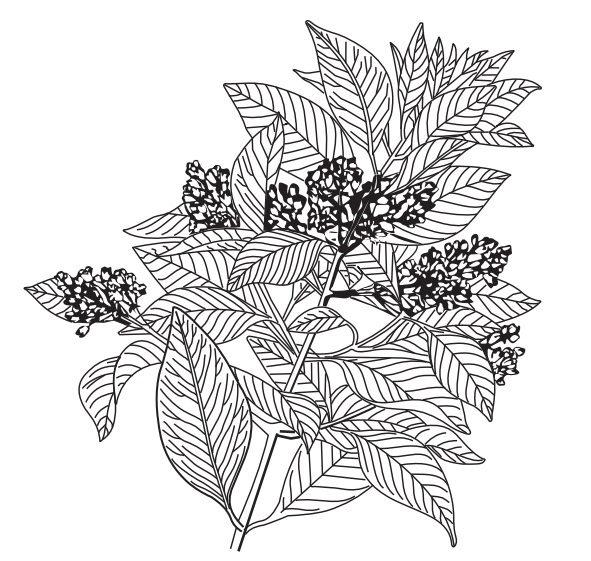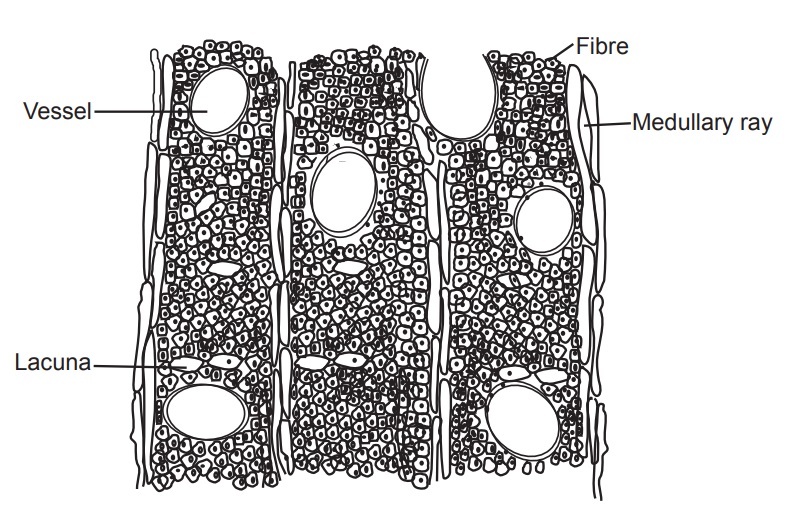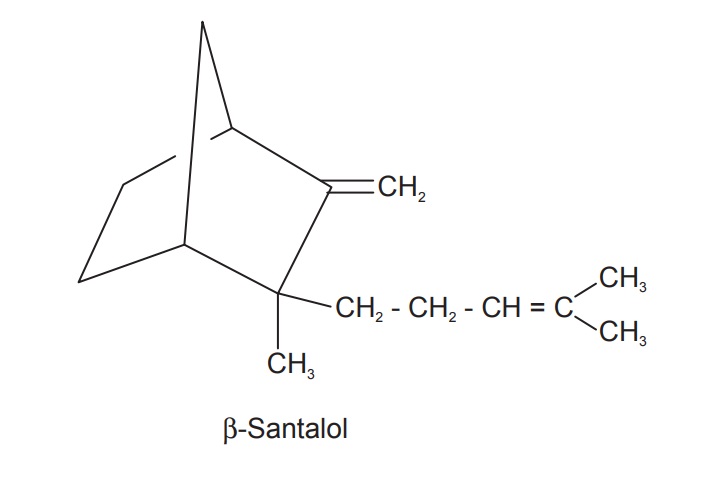Sandalwood Oil
| Home | | Pharmacognosy |Chapter: Pharmacognosy and Phytochemistry : Drugs Containing Volatile Oils
Sandalwood oil is obtained by distillation of sandalwood, Santalum album Linn., belonging to family Santalaceae.
SANDALWOOD OIL
Synonyms
Chandan oil, sandal oil, yellow sandalwood oil, liginum.
Biological Source
Sandalwood oil is obtained by distillation of sandalwood, Santalum album Linn., belonging to
family Santalaceae.
Geographical Source
Sandal is a small to medium-sized, evergreen semiparasitic
tree found in the dry regions of peninsular India from Vindhya Mountains
southwards, especially in Mysore and Tamil Nadu. It has also been introduced in
Rajasthan, parts of U.P., M.P., and Orissa.
Cultivation
Sandal tree grows mostly on red, ferruginous loam overlying
metamorphic rocks, chiefly gneiss, and tolerates shallow, rocky ground and
stony or gravelly soils, avoiding saline and calcareous situations. It is not
found on the black-cotton soil. The growth is luxuriant on rich and fairly
moist soils, such as garden loam and on well-drained deep alluvium along the
river banks, but the heartwood from these trees is deficient in oil. The trees
grown on poor soils, particularly on stony or gravelly soil, produce more
highly scented wood, giving a better yield of the oil.
It reproduces from seeds dispersed by birds. Germination is
profuse in the forests immediately after the monsoons. For artificial
regeneration, it is necessary to provide suitable climatic and ecological
conditions. For procuring seeds, the fruits are collected during January–March.
Germination is up to 80%. Just after the first monsoon showers, the sandal
seeds are dibbed and protected by thorny bushes. The seeds germinate in about
8–14 days. The seedlings grow rapidly, that is, up to 20–30 cm high, at the end
of the first year.
Characteristics
Sandalwood oil is viscous, yellowish liquid having a
peculiar, heavy, sweet, and very lasting odour. It has sp. gr. 0.97–0.98,
viscosity 1.5 and acid value 0.5–0.8.

Microscopy
Transverse section of wood shows alternating lighter and
darker zones. The xylem consists of vessels and fibres. Vessels are large and
usually occur single extending from one medullary ray to the next. Fibres are
densely packed with interspersed air space termed as lacunae and consti-tute
bulk of wood. Medullary rays are very fine, usually two cells wide and closed
together. Volatile oil is deposited in the heartwood and is found in all the
elements of the wood; it is not secreted by or contained in any particular
cells or glands.

Chemical Constituents
The main odorous and medicinal constituent of Sandal-wood is
santalol. This primary sesquiterpene alcohol forms more than 90% of the oil and
is present as a mixture of two isomers, α-santalol and β-santalol, the former predominating. The other constituents
reported are hydrocarbons santene, nor-tricycloekasantalene, α-, and β- santalenes.

Uses
Sandalwood oil is highly used in perfumery creations and
finds an important place in soaps, face creams, and toilet powders. A
chemo-protective action on liver carcinogenesis in mice has been demonstrated.
Substitutes and Adulterants
Oil from several plant sources are either used as
substitutes for or as adulterants of natural sandalwood oil. Oil obtained from
the Australian plant Fusanus spicatus
(Eucarya spicata) is used as a substitute for genuine Sandalwood oil. Wood
and oil of Santalum yasi have a
feeble odour which is not deli-cate like that of Indian Sandalwood oil. East
Africa markets the wood and oil derived from Osyris tenuifolia, the wood is similar to sandal and is used as an
adulterant. An oil from Mauritius possesses most of the characteristics of the
Indian oil. In West Indies, oil derived from Amyris balsamifera Linn. is marketed as a cheap substitute for
Indian sandalwood oil. In India, the wood of Erythroxylum monogynum Roxb. is used as an adulterant. The wood of Mansonia gagei Drum, resembles
sandalwood closely in its physical and other characteristics. Another species,
which is common in southern India and used as an adulterant, is Ximenia americana Linn. The oil is
adulterated with polyethylene glycols.
Marketed Products
It is one of the ingredients of the preparations known as
Abana, Evecare, Lukol, Antiwrinkle cream (Himalaya Drug Company) and
Mahamarichadi tail, Brahma rasayan (Dabur).
